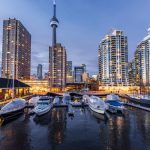Switzerland is small, but the number of picturesque towns and villages nestled between the Alpine peaks is impressive. Although Swiss towns are not as famous among many as, for example, Swiss watches, chocolate or string cheese found, they definitely deserve such fame!
That is why we invite you on a journey in which we show you the most beautiful boutique towns in Switzerland!
Morges
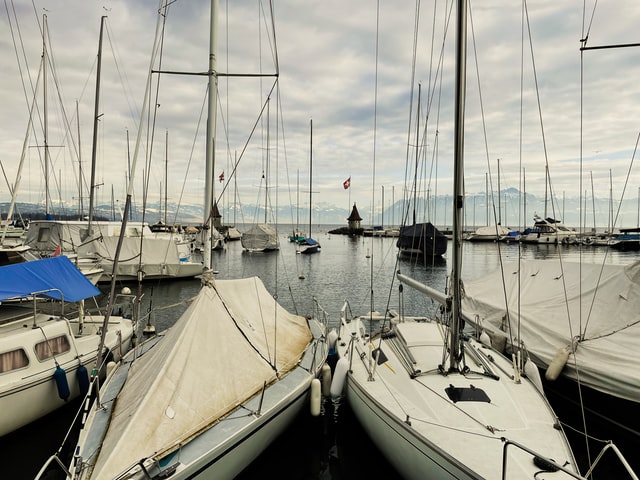
Most locals and tourists spend their time on the shores of Lake Geneva, along the lakeside promenade, which offers excellent views of the lake and the Savoy Alps. I was enthralled by Old Town's traffic-free main street, Grand-Rue - perfect for shopping during the week. On a late weekend afternoon, however, it is quiet and peaceful when the stores are closed.
A young couple has just prepared a romantic dinner. A bottle of wine is already half-drunk, and the mini grill is heating up.
A few steps away, a group of friends are drinking beer, and the tables are covered with cartons and pieces of uneaten pizza. A few more steps away, a group of young people fiercely discuss a topic, and a group of friends, teenagers maybe 16 years old, squatting on the harbor shore and sipping Coke from cans, taking a selfie in the background of the mountains.
I stop my bike and squat near them, enjoying the view of the lake. Riding towards the promenade, I pass the castle that now houses museums: the Military Museum of Canton Vaud, the Swiss Historical Figure Museum, the Artillery Museum, and the Police Museum of Canton Vaud.
Losanne (Lausanne)
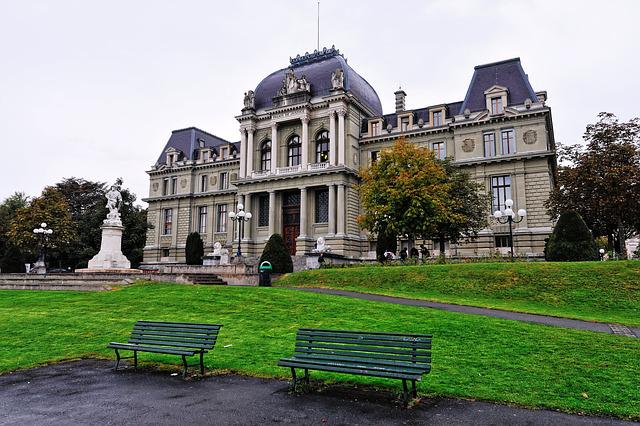
Lausanne seduced me with the view of the lake and the location on the mountainside, which I strongly felt while climbing by bike towards one of the city's biggest attractions, i.e., Notre Dame Cathedral in the Old Town. The cathedral is considered by the Swiss to be the most beautiful in the country, but it is undoubtedly one of the most outstanding buildings in all of Switzerland.
Its monumentality and the momentum with which it was built are stunning. It's hard to take the camera around it to show all its beauty, that's why I spend a long time looking for a place from where I could photograph it. Finally, I find, on one of the more popular and atmospheric streets in the city - Esc. Du Marche, which leads from the cathedral down the stairs.
And although the Old Town delights and attracts many with its many restaurants, bars, and monuments, the more giant magnet is still the promenade and the area around Ouchy, the final metro station.
Passing by groups of people drinking Swiss wine (the Lausanne region is famous for its wine production), I wanted to stop and sit down with them more than once. And I could have done it because I've already learned that the Swiss are amicable and open people several times.
However, instead of sitting with them, I would sit by the lake because it is the biggest attraction in the whole region. Here you have the impression that no one works but jogs, rides a bike or rollerblades, does picnics and barbecues, meets friends, and spends time with family.
Montreux
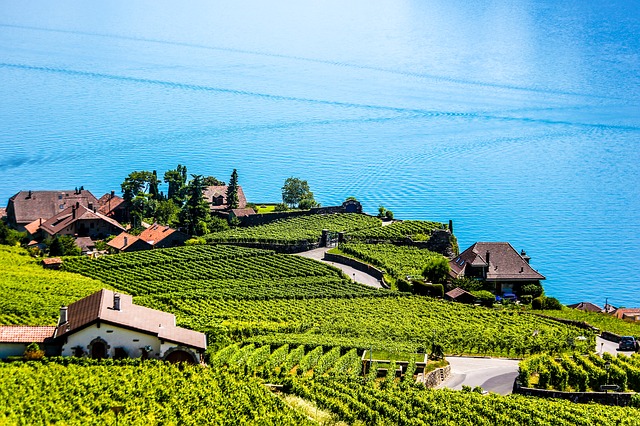
The promenade is bustling with activity. Every café table is occupied, as are the benches along the lakeshore. Driving through the waterfront strip, I get the impression that all the locals have just today decided to take a stroll on the promenade. And no wonder, because it is one of the most charming places in the city. Almost all towns located on Lake Geneva have created recreational areas on the shores of the lake.
Montreux is a popular Swiss resort that has been known as a tourist destination since the 19th century, and the region itself is called the Swiss Riviera. It has a stunning view and thus has been attracting tourists for years, who want to spend time here both in the winter and summer. The proximity of the lake makes it an ideal place for water sports. There is no shortage of canoes or amateurs a stand-up paddle on the lake all day long.
The town is famous for its beautiful view of the lake, so it's no wonder that locals and tourists flock here on their days off. Tourists especially like to go to the main square, where I also go. There is a statue of Freddie Mercury, the leader of the band Queen. Every visitor wants to take a picture with Freddie.
And why is the statue of Freddie just here? The town is home to the Mountain Studios recording studio, where Queen, Deep Purple, The Rolling Stones, and David Bowie, among others, recorded.
After photographing Freddie, I flee. The crowd thickens in the evening, and I head towards the city's biggest tourist attraction - Chillon Castle. Majestic and austere, it looks beautiful on the shore of the lake in the light of the setting sun. I sit on the beach until sunset to enjoy this view in silence, and it is probably the most memorable of my visit to the city.
In the morning, from the vicinity of St. Vincente's church, I set off towards Glion, climbing as many as 1,055 stairs to get a bird's eye view of the city.
Fryburg (Freiburg)
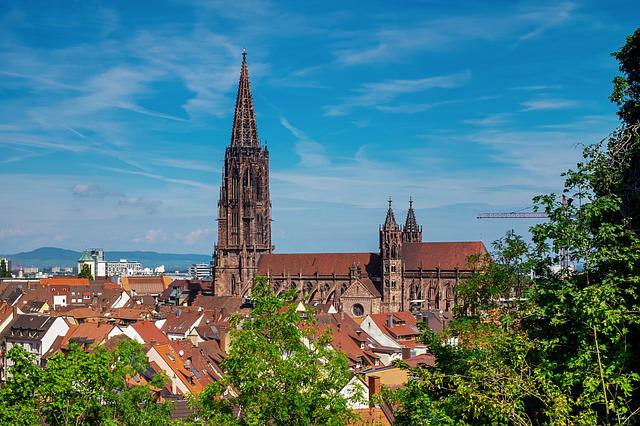
The city greets me with rain, but it does not prevent me from seeing and admiring its beauty. Driving through the narrow and steep streets of the town is an absolute pleasure. It is one of the largest medieval cities, surrounded by the remains of the fortification walls. Freiburg is surrounded on three sides by the Sarine River, and we can say with a clear conscience that this is a city dominated by bridges.
As my guide, Maria, tells me, what's unique about the city is St. Nicholas Cathedral, especially the fantastic stained glass windows by the Pole Joseph Mehoffer. Maria assures me that the hour and a half we have for exploring the Old Town could be spent just discussing the stories depicted in the individual stained glass windows, in which Mehoffer smuggled in many personal themes.
The Old Town, of course, does not exhaust what is worth seeing in Freiburg. There are many museums here. One of the most popular is the Jean Tinguely - Niki de St Phalle Museum, dedicated to the sculptures of the Freiburg-born Jean Tinguely.
Thun
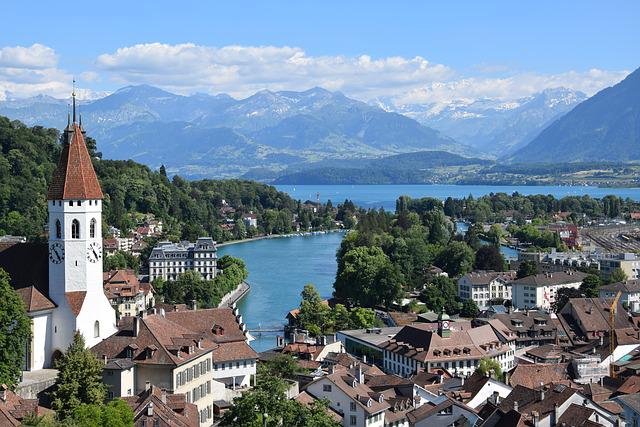
Thun, like Bern, is situated on the Aare River, which flows into the nearby Lake Thun, which formerly formed one large body of water with Lake Brienz.
Overlooking the city is a twelfth-century castle, which I climb in the morning. The court offers a panoramic view of the city and the river flowing through it in a fantastic shade. It's also not hard to miss the 16th-century town hall and the town church with a tower dating back to 1330.
Thun impresses me with its climate. Along the river are numerous cafes and restaurants, attracting residents and tourists. The city also attracts lovers of water sports: sailors, surfers, divers, walkers, and cyclists. I also like to go for a ride along the lake, stopping every now and then and not being able to look at the calm blue surface.
Bern
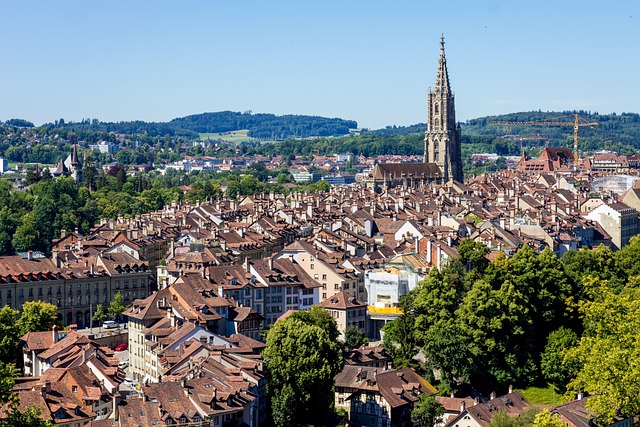
The city is the capital of the country and the canton of Bern. What is its characteristic for it? Numerous bridges connect two parts of the city divided by the Aare River. The arcades, which in the center of the old town run uninterrupted for six kilometers, create Europe's longest shopping promenade. Even on a rainy day, you can enjoy shopping in the numerous boutiques.
And the bear, which is a symbol of the city and, in a way, its mascot. The bear can be seen even in the city coat of arms. And why the bear? Legends say that the city's founder, Prince Bertold V of Zähringen, killed a bear right where the town stood, which is why he named it Bern (from the German bär, which means bear).
With its medieval Old Town, Bern is a UNESCO World Heritage Site. Interestingly, until 1405 it was entirely wooden. Unfortunately, a great fire destroyed everything, and the city was rebuilt already with sandstone. There are no colorful houses known in other European cities. All are the same color. There is a late Gothic St. Vincent Cathedral (Berner Munster) and a hundred-meter tower with 344 steps in the Old Town.
Another tower, the Clock Tower, is also distinctive and vital to the city, which my guide Carmen describes as the Swiss Grand Canyon. The building used to be part of one of the city gates. Interestingly, it has existed since 1530, and the entire mechanism, which was invented centuries ago, still serves its purpose. Four minutes before each full hour, the clock mechanism moves the figures, playing a several-minute show. We hear roosters crowing and see a bear moving.
We walk mainly in the city center along Marktgasse and Kramgasse streets. It is here that there are 11 fountains with figures from the 16th century along a stretch of about 150 meters.
During the golden hour, I go to the Rose Garden, which offers the most beautiful panorama of the city. The garden is also one of the locals' favorite spots. When I arrive at the place, the wall overlooking the city is almost entirely occupied by groups of young people.
Lugano
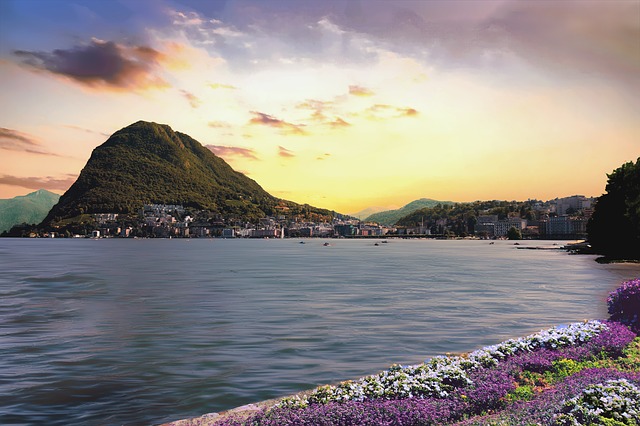
Lies on the Swiss-Italian border in the Italian-speaking region of Ticino. It offers a genuinely Mediterranean vibe, beautiful sunny weather, and exciting attractions. The atmosphere of Italy is right at your fingertips. This can be seen in the architecture, customs, and cuisine.
In Lugano, you have everything your heart desires: mountains and lakes, hiking trails and beaches, relaxation, and activity.
One of Lugano's main attractions is undoubtedly the white steamboat cruise on Lake Lugano. Take the cable car up to the nearby Monte Bre and Monte San Salvatore, which offer some of the most spectacular views of the area, the lake, and the snow-capped peaks. To the northwest of Lugano, sun-drenched Locarno on Lake Maggiore awaits you with a genuinely Swiss life that takes on a subtropical feel thanks to warm days, blossoming gardens, and palm-fringed mansions.




